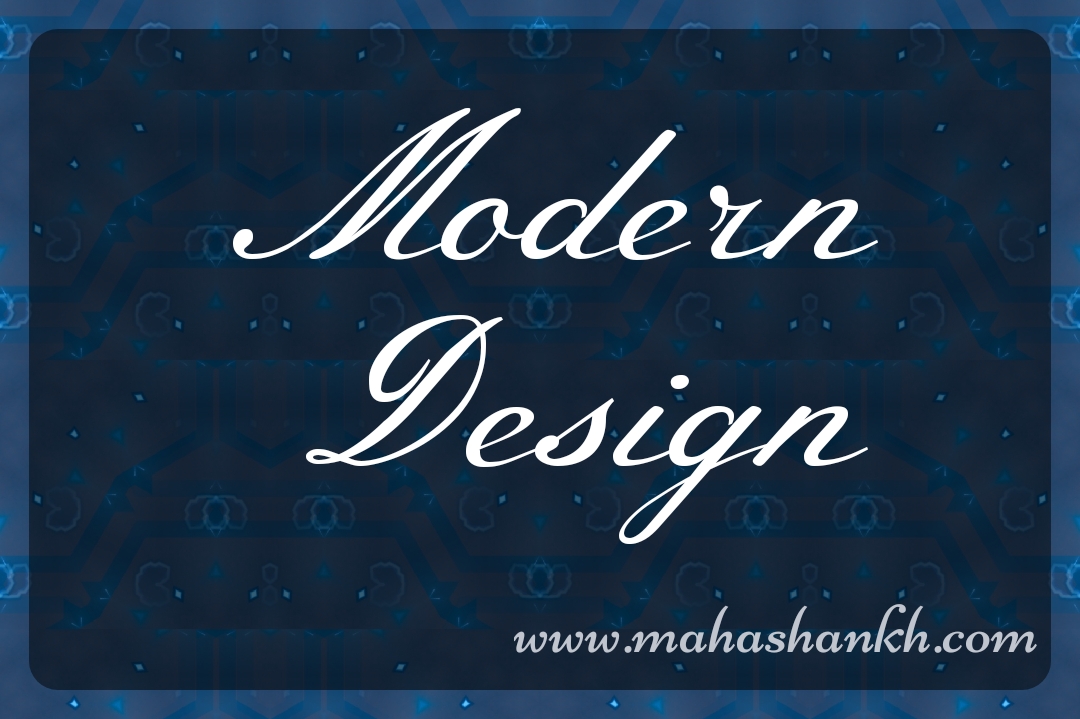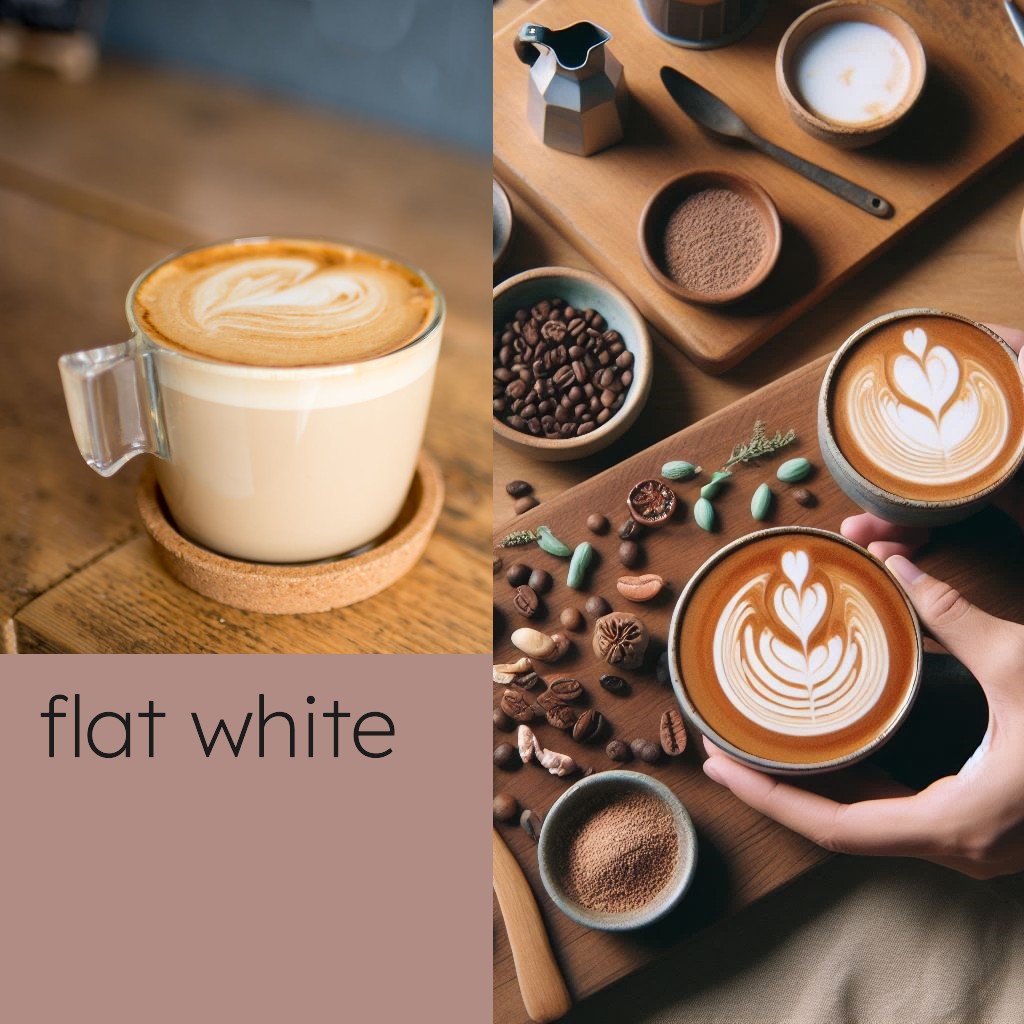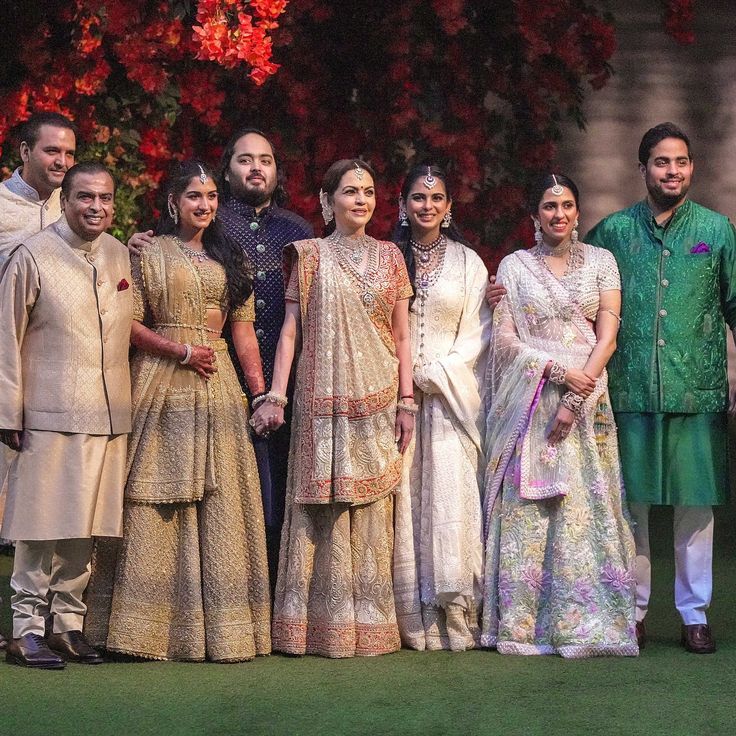Introduction to Modern Interior Design: Exploring the evolution of interior design trends and Embracing the principles of modernism:
Introduction to Modern Interior Design: A Journey Through Trends and Modernism
Modern interior design is a timeless aesthetic that emphasizes clean lines, functionality, and a connection to nature. It emerged in the early 20th century as a reaction to the ornate and cluttered styles of the past, such as Victorian and Gothic. Modernism, the philosophical movement that underpinned modern design, championed simplicity, rationality, and progress.
Evolution of Interior Design Trends: From Grand to Streamlined
Before the arrival of modernism, interior design trends were often dictated by tradition and the desire for opulence. Grand halls, ornate furniture, and rich fabrics were all the rage. However, the late 19th and early 20th centuries saw a shift towards a more practical and pared-down aesthetic. The Arts and Crafts movement, for example, emphasized handcrafted furniture and natural materials, paving the way for the streamlined simplicity of modern design.
Table of Contents
Embracing the Principles of Modernism
The core principles of modernism that continue to influence interior design today include:
- Emphasis on function: Form follows function, meaning that furniture and decor should be practical and serve a purpose.
- Clean lines and geometric shapes: Gone are the curves and flourishes of the past; modern design favors clean lines, geometric shapes, and uncluttered spaces.
- Neutral color palettes: Whites, beiges, grays, and blacks are the foundation of most modern palettes, with pops of color used sparingly as accents.
- Natural materials: Modern designers often favor natural materials like wood, stone, and leather, creating a sense of warmth and connection to the outdoors.
- Integration of art and architecture: Modernism blurs the lines between interior design and architecture, with an emphasis on open floor plans and the incorporation of art into the overall design.
Modern Interior Design Today
While the core principles of modernism remain constant, modern interior design continues to evolve. Today, we see a wider range of influences, from Scandinavian minimalism to mid-century modern to industrial chic. There is also a greater emphasis on personalization and creating spaces that reflect individual style and taste.
Tips for Creating a Modern Interior
- Start with a clean slate: Declutter your space and remove any unnecessary furniture or decor.
- Choose a neutral color palette: Whites, beiges, and grays are a good starting point.
- Incorporate clean lines and geometric shapes: Look for furniture and decor with simple lines and uncluttered forms.
- Bring in natural elements: Use wood, stone, and plants to add warmth and texture.
- Don’t be afraid of pops of color: Use statement pieces or artwork to add a touch of personality.
- Embrace natural light: Make the most of natural light with large windows and skylights.
- Accessorize with intention: Keep accessories to a minimum and choose pieces that are both functional and stylish.
Modern interior design is not just about trends; it’s a way of living. By embracing the principles of modernism and creating a space that is both functional and beautiful, you can create a home that reflects your unique style and brings you joy.
I hope this article has given you a good introduction to modern interior design. If you have any questions, please feel free to ask!
Open Concept Living Spaces: Breaking Down Barriers, Creating Flow ( Modern Interior Design)
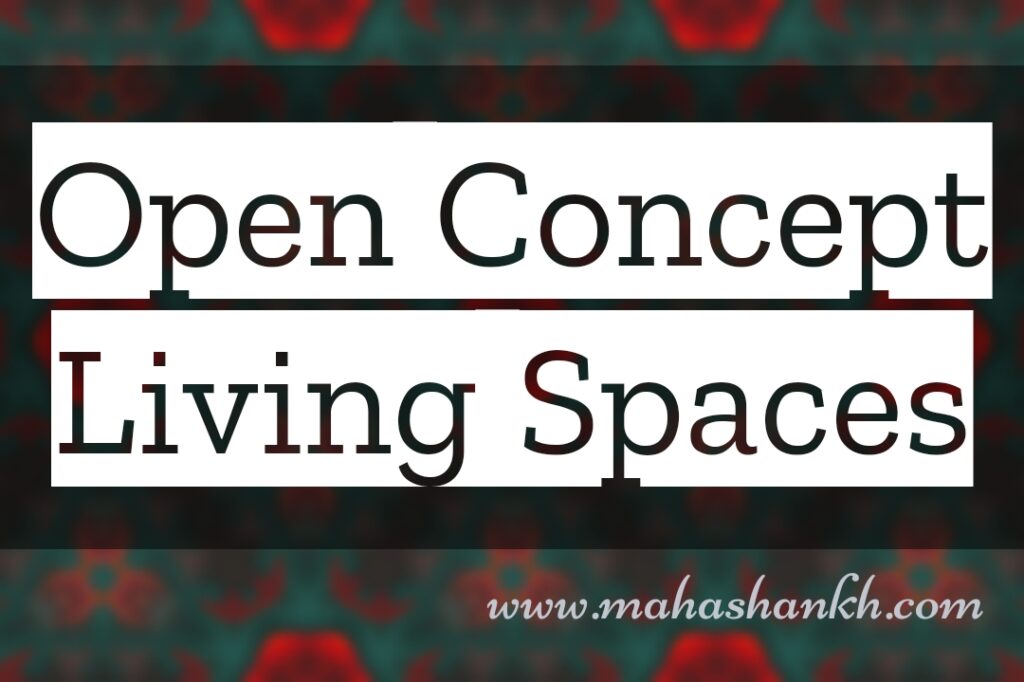
For decades, the open concept has dominated modern interior design, blurring the lines between rooms and fostering a sense of spaciousness and connection. But what exactly is it, and how can you create a seamless, functional open floor plan in your own home?
Breaking Down the Walls, Not the Function:
At its core, an open concept living space removes walls and partitions between traditionally separate rooms, like the living room, dining room, and kitchen. This creates a unified, expansive area that promotes interaction and flow.
However, simply knocking down walls isn’t enough. A successful open concept needs defined zones that maintain functional separation without resorting to physical barriers.
Creating Seamless Transitions:
Here are some key strategies to achieve a harmonious open floor plan:
1. Define Zones with Furniture:
Use furniture placement to visually delineate different areas within the open space. A large area rug can anchor the living room, while a breakfast bar can separate the kitchen from the dining area.
2. Play with Levels:
Varying floor levels can subtly distinguish between zones. Consider elevating the dining area with a platform or lowering the living room with a sunken floor.
3. Embrace the Power of Lighting:
Strategic lighting can highlight specific areas and create a sense of intimacy within the larger space. Pendant lights over the dining table, task lighting in the kitchen, and soft ambient lighting in the living room can all contribute to functional zoning.
4. Let Materials Guide You:
Use different flooring materials to distinguish areas. For example, wood flooring in the living room can transition to tile in the kitchen, creating a visual separation without the need for walls.
5. Don’t Forget the Ceiling:
Varying ceiling heights can add visual interest and define zones within an open space. A vaulted ceiling in the living room can contrast with a lower ceiling in the kitchen, creating a sense of hierarchy.
Open Concept: Not Just for Everyone:
While open floor plans offer numerous benefits, they’re not universally ideal. Consider these potential drawbacks before diving in:
- Noise can easily travel throughout the space.
- Lack of privacy can be an issue for those who crave quiet nooks.
- Strong smells from cooking can quickly permeate the entire living area.
Open to the Possibilities:
With careful planning and design, an open concept living space can be a transformative element in your home. By breaking down barriers and creating seamless transitions, you can foster a sense of togetherness, maximize space, and create a truly dynamic living environment.
Minimalism in Modern Interior Design: Embracing Clean Lines and Simplicity
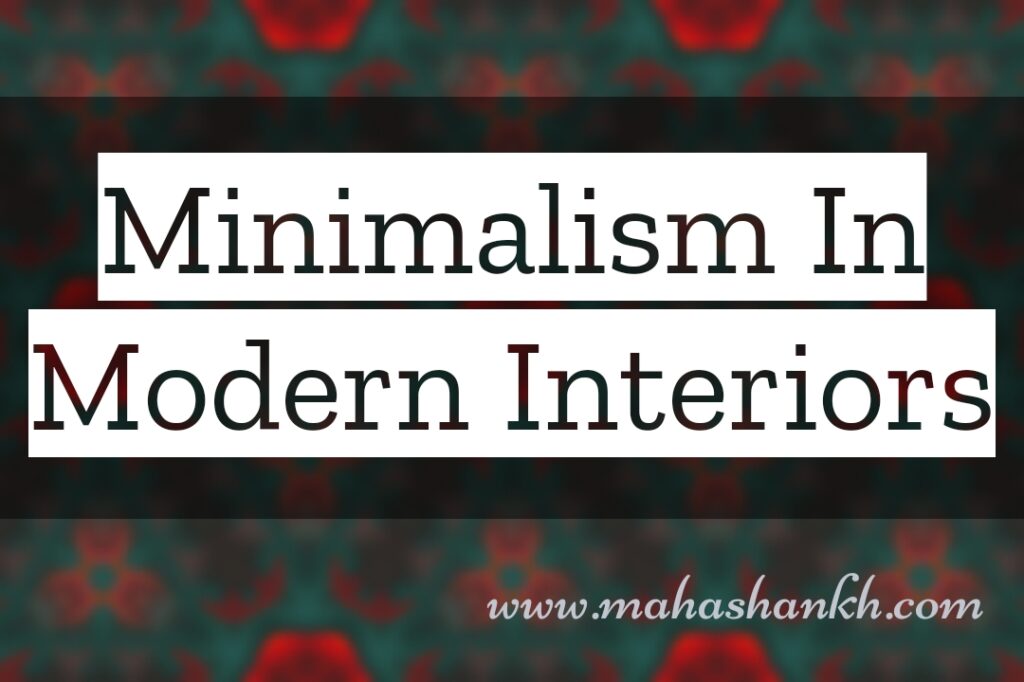
Minimalism, a philosophy of “less is more,” has permeated modern interiors, offering a serene and purposeful aesthetic. In this landscape of clean lines and uncluttered spaces, let’s delve into the rise of minimalistic design and explore how it utilizes simplicity to create stunning and functional rooms.
The Rise of Minimalism:
- Reaction to Excess: The 21st century saw a growing rejection of consumerism and clutter. Minimalism emerged as a reaction to overstuffed rooms and overcomplicated lives, offering a sense of calm and clarity.
- Focus on Experience: Minimalism shifts the focus from material possessions to experiences and personal growth. The uncluttered environment allows for deeper connections with oneself, creativity, and loved ones.
- Sustainable Approach: Minimalism promotes conscious consumption and responsible living. By owning less and choosing quality over quantity, we reduce our environmental footprint and embrace a more mindful approach to material goods.
Utilizing Clean Lines and Simplicity:
- Form Follows Function: Minimalism prioritizes functionality. Every piece of furniture or decor serves a purpose, eliminating unnecessary elements and creating a streamlined flow.
- Neutral Palettes: Clean lines are often paired with neutral color palettes of whites, beiges, and grays. These hues create a sense of calmness and spaciousness, allowing pops of color and textures to shine.
- Embrace Natural Light: Minimalism celebrates natural light, maximizing its presence through large windows and open floor plans. This interplay of light and shadow adds depth and dimension to the space.
- Statement Pieces: Minimalism doesn’t shy away from bold accents. A single statement piece, like a sculptural lamp or a vibrant artwork, can add personality and visual interest without cluttering the space.
- Hidden Storage: Clutter-free doesn’t mean functionless. Built-in storage solutions, concealed cabinets, and multi-purpose furniture help maintain a clean aesthetic while keeping essential items organized.
Beyond Aesthetics:
Minimalism extends beyond visual appeal. It encourages a mindful approach to living, decluttering both your physical space and your mental landscape. By embracing simplicity, we can:
- Reduce stress and anxiety: Clutter can be mentally taxing. A Minimalist environment promotes a sense of calm and clarity, contributing to mental well-being.
- Increase productivity: A distraction-free space fosters focus and allows for deeper engagement in tasks.
- Boost creativity: With a clean canvas, creative expression can flourish. The uncluttered space allows for new ideas and possibilities to emerge.
Minimalism in modern interiors is not just a trend; it’s a conscious choice to live with intention and purpose. By embracing clean lines, utilizing simplicity, and appreciating the beauty of negative space, we can create homes that are not only aesthetically pleasing but also contribute to a calmer, more fulfilling life.
Innovation Meets Texture: Pushing the Boundaries of Modern Interiors Design

Modern interiors are all about creating spaces that are both functional and aesthetically captivating. In recent years, there’s been an exciting surge in the use of innovative materials and textures, breaking away from the conventional and introducing a tactile dimension to design. Let’s dive into this fascinating frontier and explore how these elements can elevate your next interior project:
Cutting-Edge Materials:
- Bio-based materials: Embrace sustainability with materials like mycelium (mushroom-based foam), which offers sound insulation and can be shaped into furniture or panels.
- Smart materials: Integrate technology seamlessly with self-cleaning surfaces, color-changing walls, or interactive lighting that responds to movement.
- Recycled and upcycled materials: Give discarded materials a new lease on life with reclaimed wood, metal scraps, or even glass bottles transformed into stunning countertops or lighting fixtures.
- Translucent materials: Play with light and create ethereal effects using panels made from resin, acrylic, or even etched glass, allowing for visual layers and diffused illumination.
Unique Textures:
- Textured wallpaper: Go beyond flat surfaces with tactile wallpapers that mimic natural elements like woven grass, tree bark, or even feathers, adding visual and sensory interest.
- Tactile tiles: Introduce a variety of textures underfoot with ceramic tiles that mimic cobblestones, wood grain, or even woven patterns, creating a unique walking experience.
- Sculpted surfaces: Incorporate custom-made panels or walls with 3D textures, creating a dramatic focal point or playful geometric backdrop.
- Mixed materials: Don’t be afraid to experiment! Combine smooth metals with rough stone, soft textiles with woven leather, or sleek glass with warm wood to create a layered and visually rich texture palette.
Bringing it all together:
Remember, the key to successful integration of innovative materials and textures is balance and intentionality. Consider the overall ambiance you want to create, the functionality of the space, and how these elements will complement your existing design aesthetic.
Here are some additional tips:
- Start small: Experiment with texture in smaller areas like accent walls or furniture pieces before committing to a large-scale application.
- Consider lighting: The way light interacts with different materials and textures can dramatically affect the mood and feel of a space. Play with shadows, highlights, and diffused light to create depth and drama.
- Think about maintenance: Some innovative materials may require special care or cleaning protocols. Be sure to research the upkeep needs before making a decision.
By embracing innovative materials and textures, you can add a touch of the extraordinary to your modern interiors, creating spaces that are not only visually stunning but also engage the senses and spark conversation. So, go ahead, explore, experiment, and let your creativity take flight!
Open Concept Living Spaces: Breaking Down Barriers, Creating Flow ( Modern Interior Design)
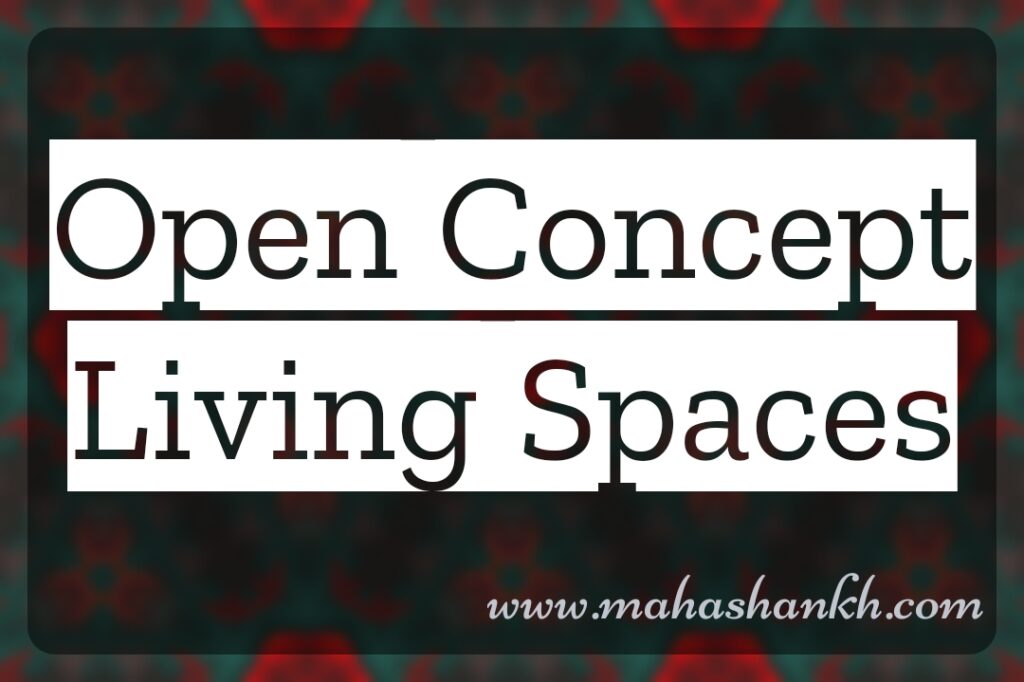
For decades, the open concept has dominated modern interior design, blurring the lines between rooms and fostering a sense of spaciousness and connection. But what exactly is it, and how can you create a seamless, functional open floor plan in your own home?
Breaking Down the Walls, Not the Function:
At its core, an open concept living space removes walls and partitions between traditionally separate rooms, like the living room, dining room, and kitchen. This creates a unified, expansive area that promotes interaction and flow.
However, simply knocking down walls isn’t enough. A successful open concept needs defined zones that maintain functional separation without resorting to physical barriers.
Creating Seamless Transitions:
Here are some key strategies to achieve a harmonious open floor plan:
1. Define Zones with Furniture:
Use furniture placement to visually delineate different areas within the open space. A large area rug can anchor the living room, while a breakfast bar can separate the kitchen from the dining area.
2. Play with Levels:
Varying floor levels can subtly distinguish between zones. Consider elevating the dining area with a platform or lowering the living room with a sunken floor.
3. Embrace the Power of Lighting:
Strategic lighting can highlight specific areas and create a sense of intimacy within the larger space. Pendant lights over the dining table, task lighting in the kitchen, and soft ambient lighting in the living room can all contribute to functional zoning.
4. Let Materials Guide You:
Use different flooring materials to distinguish areas. For example, wood flooring in the living room can transition to tile in the kitchen, creating a visual separation without the need for walls.
5. Don’t Forget the Ceiling:
Varying ceiling heights can add visual interest and define zones within an open space. A vaulted ceiling in the living room can contrast with a lower ceiling in the kitchen, creating a sense of hierarchy.
Open Concept: Not Just for Everyone:
While open floor plans offer numerous benefits, they’re not universally ideal. Consider these potential drawbacks before diving in:
- Noise can easily travel throughout the space.
- Lack of privacy can be an issue for those who crave quiet nooks.
- Strong smells from cooking can quickly permeate the entire living area.
Open to the Possibilities:
With careful planning and design, an open concept living space can be a transformative element in your home. By breaking down barriers and creating seamless transitions, you can foster a sense of togetherness, maximize space, and create a truly dynamic living environment.
Smart Home Integration: Where Design Meets Technology ( Modern Interior Design)
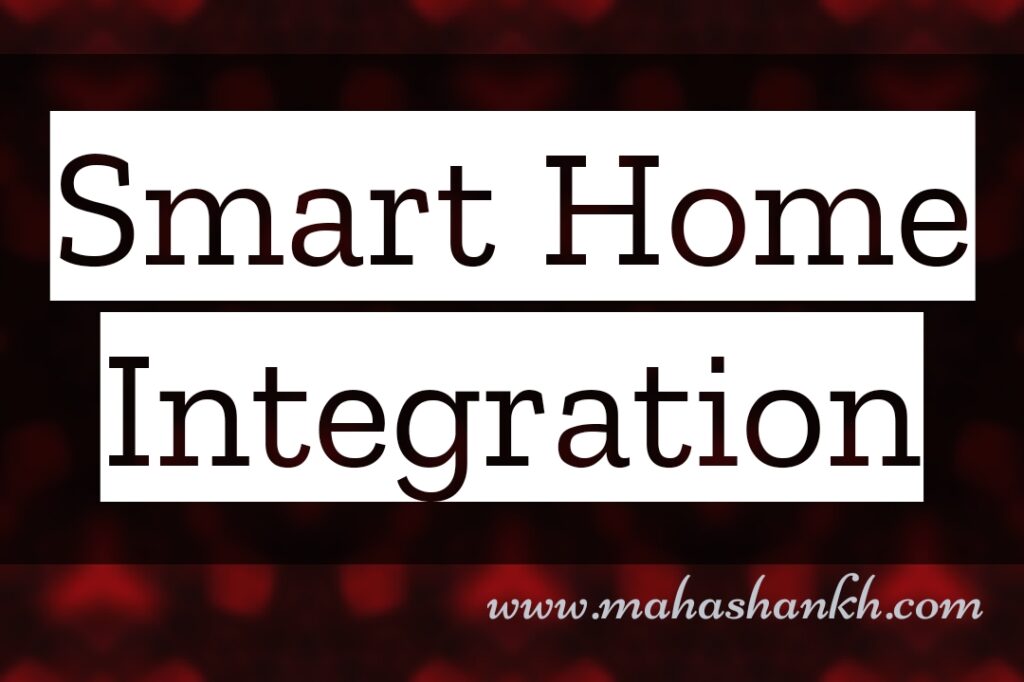
Imagine a home that anticipates your needs, adapts to your routines, and seamlessly blends elegance with cutting-edge technology. This is the future of interior design, powered by smart home integration. No longer relegated to science fiction, smart homes are becoming increasingly accessible, transforming the way we live and interact with our spaces.
Merging Aesthetics and Automation:
The key to successful smart home integration lies in bridging the gap between technology and design. Gone are the clunky gadgets and obtrusive wires. Today’s smart systems are designed to complement existing aesthetics, often disguised within beautiful furniture pieces or integrated seamlessly into architectural elements.
Smart Furniture:
Furniture is no longer simply a place to sit or store things. Smart furniture pieces enhance comfort, convenience, and even health. Imagine an adjustable bed that optimizes your sleep quality, a charging coffee table that powers your devices wirelessly, or a modular sofa that adapts to your changing needs.
Automated Home Systems:
Beyond furniture, home automation systems control various aspects of your environment, from lighting and climate to security and entertainment. Adjust the temperature with a voice command, set mood lighting for movie nights, or activate sprinklers with weather updates – all from your smartphone or tablet.
Benefits Beyond Convenience:
While the convenience factor is undeniable, smart home integration offers a multitude of benefits:
- Increased energy efficiency: Automated lighting and climate control systems can optimize energy consumption, leading to lower bills and a reduced environmental footprint.
- Enhanced security: Smart locks, cameras, and alarms provide peace of mind and deter potential intruders.
- Improved accessibility: Voice control and touchless interfaces make homes more accessible for people with disabilities.
- Personalized living: Tailor your home environment to your specific needs and preferences, creating a truly personal sanctuary.
The Future of Interior Design:
As technology continues to evolve, the possibilities for smart home integration are endless. Imagine:
- Biometric sensors that adjust lighting and temperature based on your mood and stress levels.
- Nanotech fabrics that self-clean and regulate temperature within furniture.
- Holographic displays that replace traditional TVs and bring entertainment to life.
While these advancements might seem futuristic, they are closer than you think. By embracing smart home integration, you can create a home that is not only beautiful and functional but also responsive and adaptable to your evolving needs. So, are you ready to step into the future of interior design?
Ready to Get Started?
Before diving into smart home integration, here are some things to consider:
- Identify your needs and priorities. What do you want your smart home to do for you?
- Set a budget. Smart home technology can range from affordable to high-end.
- Do your research. Choose compatible devices and systems that work together seamlessly.
- Seek professional help if needed. An experienced smart home integrator can guide you through the process and ensure everything is set up correctly.
Biophilic Design and Green Elements: Bringing Nature Indoors ( Modern Interior Design)

In an increasingly urbanized world, the yearning for connection with nature remains strong. Biophilic design, a philosophy that prioritizes the integration of natural elements into built environments, has emerged as a powerful response to this yearning. It’s not just about adding a few potted plants; it’s about creating spaces that feel connected to the natural world, promoting well-being, creativity, and productivity.
Benefits of Biophilic Design:
- Reduced stress and anxiety: Studies have shown that exposure to nature can lower blood pressure, heart rate, and stress hormones, leading to a calmer and more relaxed state.
- Improved cognitive function: Natural elements can enhance focus, concentration, and creativity, making biophilic design ideal for workplaces and learning environments.
- Increased productivity: A connection to nature can boost energy levels and motivation, leading to improved work performance.
- Enhanced physical health: Exposure to natural light and greenery can support better sleep patterns, strengthen the immune system, and even aid in recovery from illness.
Incorporating Biophilic Elements:
There are countless ways to bring biophilic design into your home or workspace. Here are a few ideas:
- Direct connection with nature:
- Large windows and skylights that maximize natural light exposure.
- Sliding glass doors or balconies that create a seamless transition between indoors and outdoors.
- Water features like fountains or ponds that add the soothing sound of flowing water.
- Indirect connection with nature:
- Natural materials like wood, stone, and plants bring the outdoors in visually and texturally.
- Earthy color palettes inspired by nature, such as greens, browns, and blues, create a calming atmosphere.
- Natural patterns and textures, like wood grain or organic shapes, evoke a sense of the natural world.
- Nurturing the living world:
- Indoor plants of all shapes and sizes, from vibrant foliage to delicate air plants, improve air quality and add pops of color and life.
- Vertical gardens utilize wall space to create greenery accents or even edible herb walls.
- Biophilic art and photography incorporate natural elements into the visual décor.
Remember, biophilic design is not a one-size-fits-all approach. The key is to find ways to incorporate elements of nature that resonate with you and your space. Whether it’s a small terrarium on your desk or a wall of living greens in your living room, even small gestures can make a big difference.
Embrace the Power of Nature:
By embracing biophilic design, you can create spaces that are not only beautiful and functional but also good for your health and well-being. So, open your windows, let the sunlight in, and bring a little bit of the outdoors into your life. You’ll be glad you did!
Bold Colors and Contrasts: Injecting Vibrancy into Modern Interiors Design
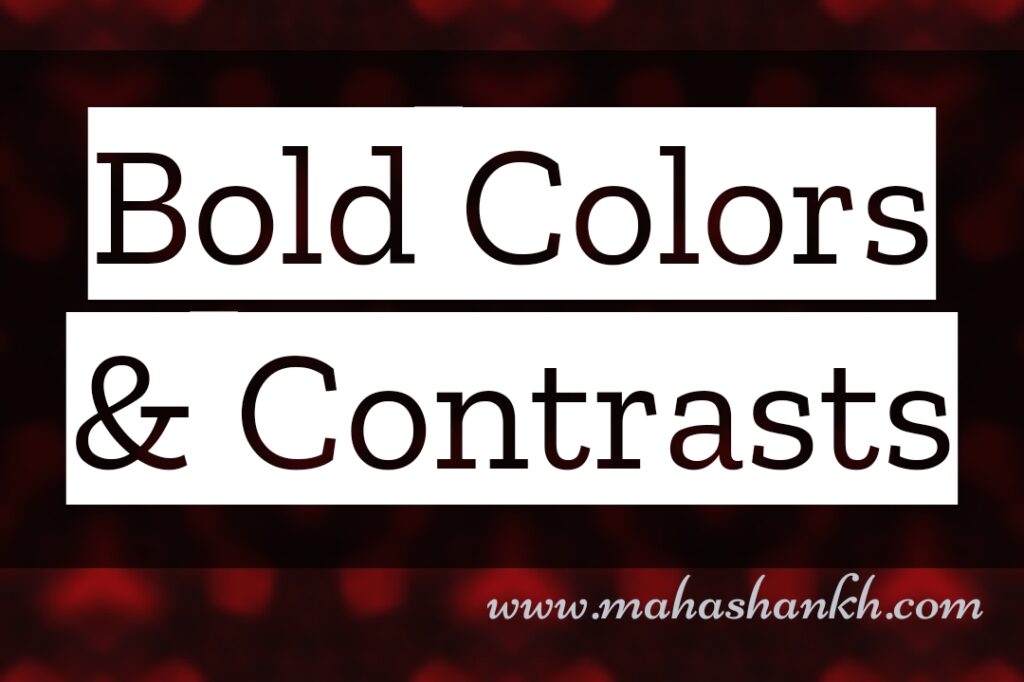
Modern interiors often evoke images of clean lines, minimalist spaces, and neutral palettes. But for the daring and design-savvy, bold colors and striking contrasts are emerging as a powerful trend, injecting personality, drama, and visual interest into contemporary homes.
Why Go Bold?
- Express yourself: Forget beige walls and predictable palettes. Bold colors allow you to showcase your unique personality and create a space that truly reflects your style.
- Break the mold: Move away from the monotony of neutral interiors and create a space that is anything but ordinary. Bold colors and contrasts make a statement and leave a lasting impression.
- Boost energy and mood: Certain colors are known to evoke specific emotions. A splash of vibrant yellow can bring sunshine and cheer, while a deep blue can create a sense of calm and tranquility.
Playing with Color and Contrast:
- Color blocking: Divide walls into distinct sections painted in contrasting hues. This creates a stunning visual impact and can define different areas within a space.
- Accents & accessories: Introduce bold pops of color through furniture, rugs, artwork, and decorative objects. This is a great way to experiment with color without committing to a full wall covering.
- Statement furniture: A single piece of furniture in a vibrant color can act as a focal point and anchor the entire room.
- Graphic patterns: Incorporate patterns like stripes, chevrons, or geometrics in wallpaper, rugs, or upholstery to add visual complexity and movement.
Achieving Balance:
With bold colors and contrasts, creating a harmonious space is key. Here are some tips:
- Use the 60-30-10 rule: This classic design principle suggests using a dominant color for 60% of the space, a secondary color for 30%, and a pop of accent color for the remaining 10%. This ensures a balanced and cohesive look.
- Consider color relationships: Think about how different colors interact with each other. Use complementary colors that sit opposite each other on the color wheel for a striking contrast, or analogous colors that are next to each other for a more harmonious feel.
- Don’t forget neutrals: Balance bold colors with neutral elements like white, black, or gray to provide a sense of visual rest and prevent the space from feeling overwhelming.
- Play with light: Natural light can enhance the vibrancy of colors, while strategic use of artificial lighting can highlight specific design elements and create ambiance.
Embrace Your Bold Side:
Injecting bold colors and contrasts into your modern interior can be a transformative experience. It allows you to break free from the confines of convention, express your personality, and create a space that is uniquely your own. So, don’t be afraid to experiment, take risks, and have fun with color! Your home should be a reflection of you, and with a little creativity, it can be a vibrant canvas for your design dreams.
Remember, the key is to choose colors and contrasts that resonate with you and create a space that feels comfortable and inspiring. With careful planning and a touch of boldness, you can transform your modern interior into a masterpiece of color and personality.
Ready to get started? Here are some additional tips:
- Collect inspiration: Browse design magazines, Pinterest boards, and online resources to find ideas for incorporating bold colors and contrasts in your own space.
- Test your colors: Paint swatches on your walls and live with them for a few days to see how they look in different light conditions.
- Seek professional help: If you’re unsure about your color choices or design ideas, consult with an interior designer who can help you create a cohesive and successful look.
With a little planning and a lot of personality, you can inject vibrancy into your modern interior and create a space that is both stylish and inspiring.
Customization and Personalization: Crafting Homes as Unique as You Are ( Modern Interior Design)
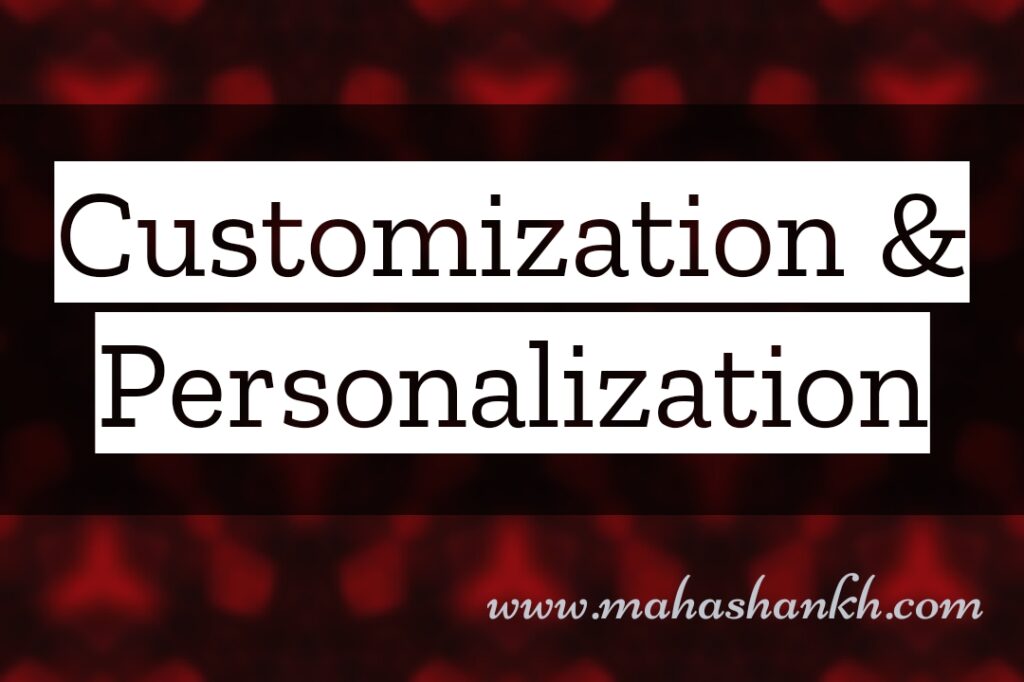
The cookie-cutter home is a relic of the past. Today, modern living thrives on individuality, expression, and spaces that truly reflect the people who inhabit them. Customization and personalization have become more than just buzzwords; they’re the driving force behind a new era of interior design, where homes are tailored to fit the unique needs and personalities of their owners.
Breaking Away from the Mold:
Gone are the days of mass-produced furniture and standardized layouts. People are yearning for spaces that speak to their passions, lifestyles, and aesthetic sensibilities. This shift is fueled by several factors:
- Rise of individuality: We’re embracing our unique identities and seeking living spaces that mirror that uniqueness.
- Technology’s empowering role: 3D printing, advanced manufacturing techniques, and online platforms offer unprecedented opportunities for bespoke design solutions.
- Focus on well-being: Personalized spaces that cater to our specific needs and preferences can enhance our comfort, productivity, and overall well-being.
Custom Furniture: The Heart of Personalization:
Custom furniture pieces are no longer a luxury reserved for the privileged few. Today, designers and makers are creating exquisitely crafted pieces tailored to individual tastes and requirements. Imagine:
- A floating bookshelf that seamlessly integrates with your existing cabinetry, perfectly housing your treasured book collection.
- A dining table crafted from reclaimed wood, echoing your love for sustainability and natural materials.
- A home office built-in unit that accommodates your tech setup, maximizes storage, and reflects your modern-minimalist aesthetic.
Beyond Furniture: Bespoke Design Solutions:
Customization extends far beyond furniture. It encompasses every aspect of your space, from architectural elements to lighting and even technology integration. Consider:
- A hidden reading nook nestled beneath the stairs, offering a cozy escape for quiet moments.
- A custom-designed home theater system that immerses you in your favorite movies and shows.
- Smart lighting systems that adapt to your daily routines and preferences, creating a truly personalized ambiance.
The Value of Personalization:
The benefits of a customized and personalized home go beyond aesthetics. These spaces:
- Enhance functionality and comfort: They cater to your specific needs and lifestyle, making daily life easier and more enjoyable.
- Boost creativity and inspiration: A space that reflects your passions and interests can spark your imagination and fuel your creativity.
- Promote well-being: Personalized environments can contribute to reduced stress, improved sleep, and overall mental and physical well-being.
Making it Your Own:
Creating a customized and personalized home doesn’t require a complete overhaul. You can start small:
- Upcycle vintage furniture pieces and infuse them with your own style.
- Incorporate handmade accessories and artwork that tell your story.
- Rearrange furniture and experiment with different layouts to discover new possibilities.
Remember, personalization is a journey, not a destination. It’s about constantly tweaking and evolving your space to reflect your changing needs and preferences. Embrace the possibilities, unleash your creativity, and embark on the journey of crafting a home that is as unique and remarkable as you are.
Multifunctional Furniture and Space Optimization: Making the Most of Every Square Foot ( Modern Interior Design)
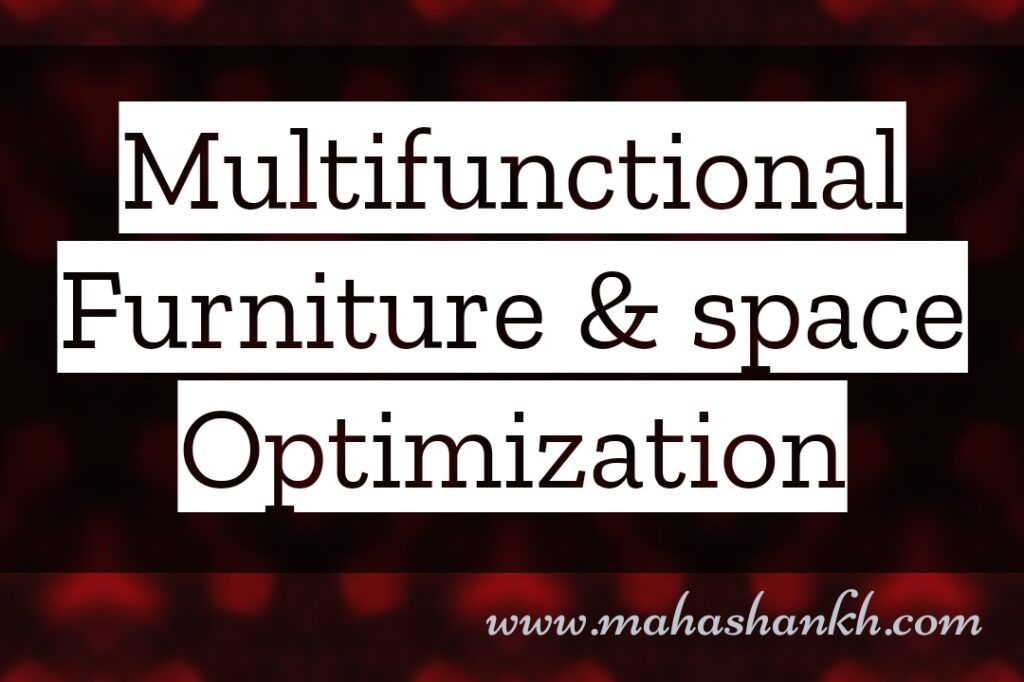
In an age of urban living and soaring property prices, compact spaces are becoming the new normal. But just because your square footage is limited doesn’t mean your living possibilities have to be. The key lies in embracing multifunctional furniture and creative space optimization strategies. With a little ingenuity, you can transform your small space into a versatile, functional, and even luxurious haven.
Why Multifunctional Furniture Wins:
- Maximizes functionality: One piece that serves multiple purposes saves space and reduces clutter. A Murphy bed that folds into a desk or a sofa that converts into a dining table offers two functions in one footprint.
- Boosts flexibility: Multifunctional furniture adapts to your changing needs. A modular shelving unit can rearrange to accommodate new hobbies or growing collections.
- Promotes organization: Built-in storage solutions within furniture pieces minimize clutter and keep your space tidy.
Creative Space Optimization Tips:
- Embrace vertical space: Utilize walls and high ceilings with shelves, cabinets, or loft beds to maximize storage and free up floor space.
- Let light flow: Opt for light and airy furniture and avoid bulky pieces that block natural light. Mirrors can also reflect light and make the space feel larger.
- Define zones with rugs and furniture: Use area rugs and strategically placed furniture to create distinct zones within your open space, like a living area, dining area, and sleeping area.
- Folding and nesting furniture: Opt for furniture that folds, collapses, or nests when not in use, like folding chairs or nesting tables. This maximizes space and creates a clutter-free environment.
- Hidden storage solutions: Utilize clever concealed storage options like ottomans with lift-up lids, built-in benches with storage compartments, or under-bed drawers.
Beyond the Furniture:
Multifunctional furniture is just the tip of the iceberg. Consider these additional space optimization strategies:
- Declutter ruthlessly: Let go of items you no longer use or need. A clutter-free space feels instantly larger and more organized.
- Embrace minimalism: Opt for sleek lines and clean layouts. Avoid unnecessary decorative items that can overwhelm a small space.
- Play with color and texture: Light and neutral colors with pops of accent create a sense of spaciousness. Textured surfaces like wood or woven fabrics add visual interest without clutter.
- Multipurpose lighting: Choose lighting fixtures that serve multiple functions, like lamps with built-in shelves or floor lamps that double as reading lights.
Living Large in a Small Space:
By embracing multifunctional furniture, implementing creative space optimization strategies, and adopting a minimalist mindset, you can transform your compact space into a functional, stylish, and truly livable haven. Remember, small spaces can offer big possibilities! So, unleash your creativity, embrace flexibility, and enjoy the benefits of living large in a small world.
Sustainable Design Practices: Building a Greener Future, One Space at a Time ( Modern Interior Design)
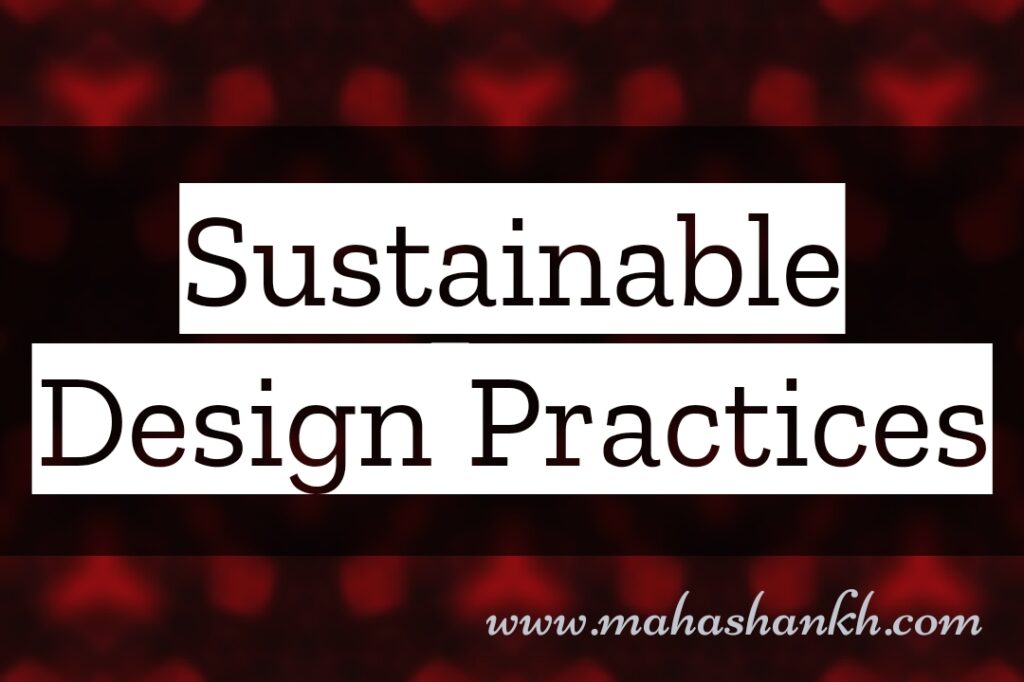
In a world increasingly aware of the environmental impact of our choices, sustainable design practices are gaining momentum. It’s no longer just a niche trend; it’s becoming the new standard for creating beautiful, functional, and environmentally responsible spaces. From utilizing recycled materials to embracing renewable energy sources, sustainable design offers a multitude of benefits for both our planet and our well-being.
Why Go Green?
- Reduce environmental impact: Sustainable design minimizes resource consumption, carbon footprint, and waste generation, contributing to a healthier planet.
- Promote well-being: Natural materials and eco-friendly practices often lead to healthier indoor air quality and a more comfortable living environment.
- Save money: Energy-efficient solutions and responsible material choices can translate into lower utility bills and long-term cost savings.
- Boost creativity: Sustainable design encourages innovative approaches and resourcefulness, leading to unique and inspiring spaces.
Embracing Sustainability in Your Home:
There are countless ways to incorporate sustainable design practices into your home, big or small. Here are some key ideas:
- Material Matters:
- Choose recycled or upcycled materials: Give discarded furniture, wood, or textiles a new lease on life. Repurpose vintage finds, use salvaged wood for flooring, or transform old pallets into coffee tables.
- Opt for natural materials: Wood, stone, and bamboo offer a timeless aesthetic while being renewable and biodegradable.
- Support sustainable brands: Choose furniture and products made by companies committed to eco-friendly practices and responsible sourcing.
- Energy Efficiency:
- Embrace natural light: Maximize windows and skylights to reduce dependence on artificial lighting.
- Invest in energy-efficient appliances: Look for Energy Star certified appliances that use less energy and save you money.
- Utilize smart technology: Install smart thermostats and lighting systems to optimize energy consumption and create a more comfortable environment.
- Reduce, Reuse, Recycle:
- Declutter regularly: Donate, sell, or repurpose items you no longer need or use.
- Compost food scraps: Reduce waste and create nutrient-rich compost for your garden.
- Choose sustainable cleaning products: Opt for non-toxic, biodegradable cleaning products to minimize environmental impact.
Beyond Your Walls:
Sustainable living extends beyond your home:
- Support local businesses: Choose locally sourced materials and furniture to minimize transportation emissions.
- Get involved in your community: Participate in neighborhood clean-up initiatives, support local sustainability projects, and spread awareness about eco-friendly practices.
Remember, every small step counts. By incorporating sustainable design practices into your home and lifestyle, you can make a significant difference in reducing your environmental footprint and creating a healthier planet for future generations.
Ready to Get Started?
Here are some additional resources to help you on your sustainable design journey:
- The U.S. Green Building Council (USGBC): https://www.usgbc.org/
- The Sustainable Furnishings Council (SFC): https://sustainablefurnishings.org/
- The Green Home Guide: https://www.greenhomeguide.com/
Embracing Futuristic Aesthetics: The Essence of Modern Interior Design
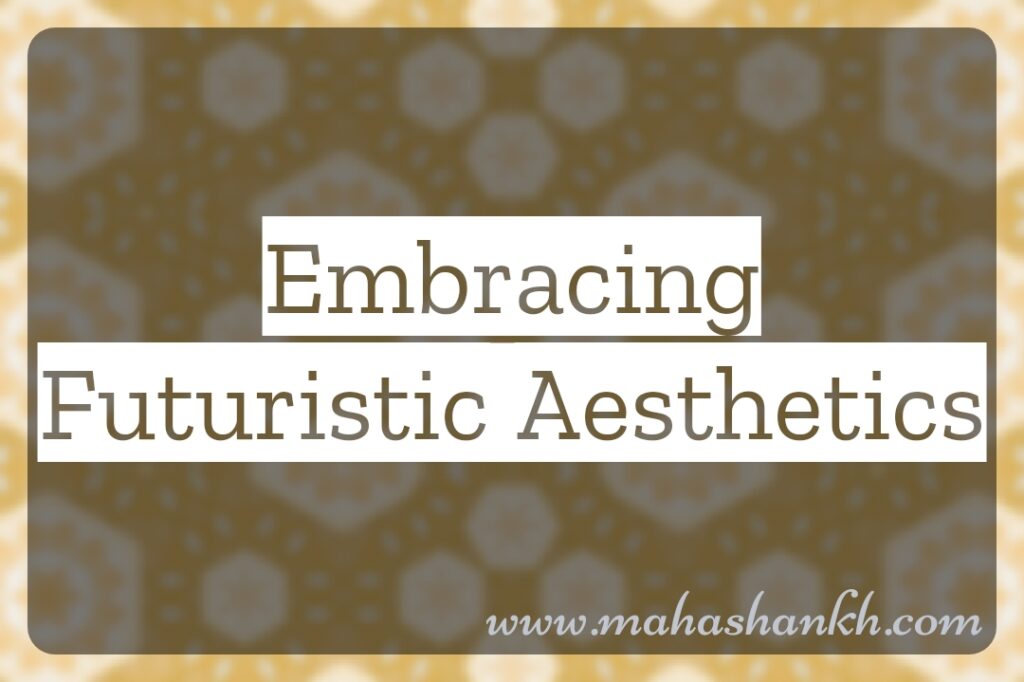
In a world increasingly defined by rapid technological advancements and blurring boundaries between reality and the digital sphere, futuristic aesthetics take center stage, pushing the boundaries of design and reimagining the spaces we inhabit. But what exactly defines this captivating aesthetic, and how can we incorporate its essence into our own modern design choices?
1. Sleek Lines and Bold Forms:
Futuristic aesthetics embrace clean lines and geometric shapes, evoking a sense of modernity and sleek sophistication. Think smooth surfaces, minimalist profiles, and furniture that appears sculpted from the future itself. Imagine chrome accents, angular structures, and statement pieces that defy conventional design norms.
2. A Symphony of Light and Technology:
Light plays a crucial role in crafting a futuristic ambience. Utilize strategic lighting to create dramatic effects, experiment with recessed lighting, LED strips, and even holographic projections. Embrace technology as an integral part of your design, incorporating smart home features, voice-activated systems, and touch-sensitive interfaces.
3. Materials of the Future:
Forget wood and leather! Futuristic aesthetics revel in innovative materials that evoke a sense of the beyond. Think gleaming metallic finishes, translucent acrylics, holograms, and even sustainable bioplastics. Experiment with textures and finishes that play with light and shadow, creating a visually dynamic and futuristic experience.
4. Sustainable Innovation:
The future is green, and futuristic aesthetics embrace sustainability as a core principle. Opt for eco-friendly materials, invest in energy-efficient technologies, and consider innovative solutions like vertical gardens or self-watering systems. Create a harmonious blend of cutting-edge design and environmental consciousness.
5. More Than Just the Visual:
Futuristic aesthetics extend beyond the purely visual. Embrace a forward-thinking mindset and incorporate elements that hint at the future – from immersive soundscapes and interactive art installations to holographic displays and smart appliances that anticipate your needs.
Bringing Futurism Home:
So, how can you bring the essence of futuristic aesthetics into your own space? Start small – incorporate sleek furniture with metallic accents, install LED lighting strips, or invest in a smart home device. Experiment with bold geometric patterns, holographic wall decals, or even futuristic sculptures. Remember, it’s about embracing the spirit of innovation and pushing the boundaries of convention.
Futuristic aesthetics are not just a trend; they represent a mindset. They challenge us to imagine the possibilities of tomorrow and incorporate that vision into the spaces we inhabit today. By embracing these principles, you can create a home that is not only stylish and modern, but also a glimpse into the exciting future that awaits.
Bonus Tips:
- Embrace modularity: Choose furniture and décor that can be easily adapted and reconfigured to suit your evolving needs.
- Play with scale: Create dramatic contrasts by incorporating both large, statement pieces and smaller, intricate details.
- Don’t be afraid of color: While whites and grays are often associated with futurism, don’t shy away from pops of bold, metallic colors or neon accents.
- Personalize your vision: Futuristic aesthetics are a blank canvas, so infuse your unique style and personality into your design choices.
Remember, the future is yours to create. So, let your imagination soar, embrace the bold spirit of futuristic design, and transform your space into a haven of modern innovation and cutting-edge style.
Sleek Simplicity in Form: Exploring the Signature Lines of Modern Architecture ( Modern Interior Design)
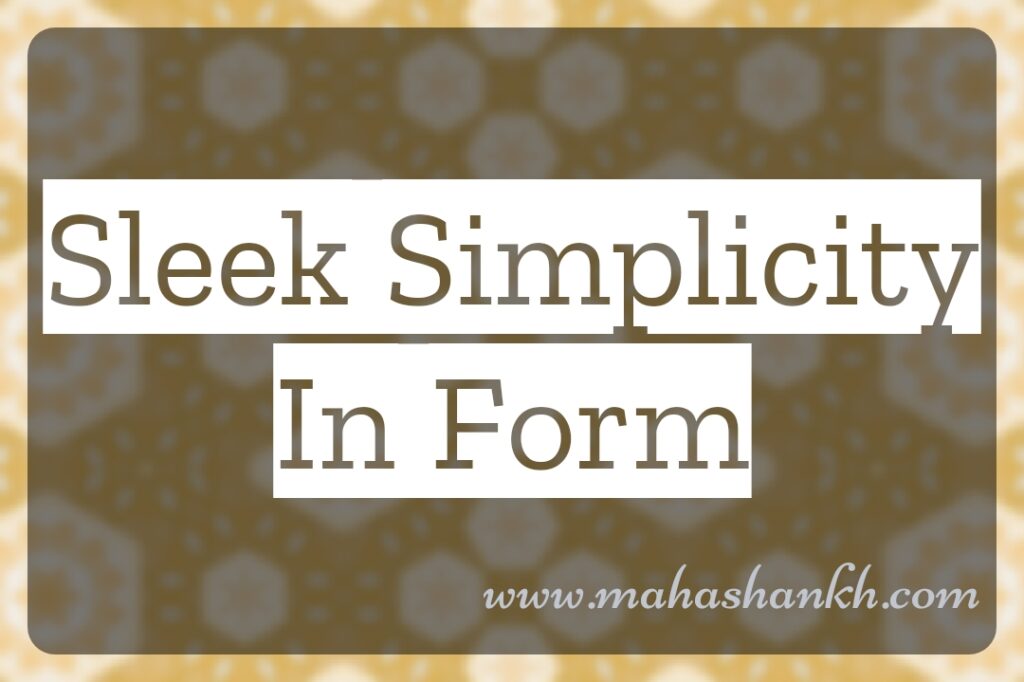
As the cityscape evolves, a distinct movement asserts its presence: modern architecture, where simplicity takes center stage, transforming concrete and glass into expressions of elegance and function. It’s a style that whispers less is more, drawing us in with its clean lines, uncluttered forms, and an unwavering commitment to intentional design.
1. Defining Geometry:
Modern architecture champions the reign of geometry. Sharp angles, straight lines, and bold geometric shapes define the language of its buildings. Think expansive glass facades reflecting the sky, cantilevered structures defying gravity, and minimalist structures rising with quiet confidence. This geometric precision not only creates a visually striking aesthetic but also imbues a sense of order and clarity in the urban landscape.
2. Material Matters:
Modern architects embrace a symphony of natural and man-made materials. Glass reigns supreme, allowing light to flood in and blurring the lines between interior and exterior. Smooth concrete surfaces add a touch of raw beauty, while sleek metal accents provide a hint of industrial chic. Wood, often sustainably sourced, offers warmth and texture, grounding the structure with a connection to nature.
3. Light as Architect:
Natural light is not just an element in modern architecture; it’s an integral design partner. Large windows, skylights, and strategically placed openings bathe the interiors in a warm glow, erasing shadows and creating a sense of spaciousness. Light sculptures and innovative lighting techniques dance across surfaces, adding another layer of visual intrigue.
4. Functionality Takes Center Stage:
Form follows function – this mantra rings true in modern architecture. Every element serves a purpose, with open floor plans maximizing space, built-in features minimizing clutter, and sustainable solutions reducing environmental impact. This commitment to functionality ensures that beauty doesn’t come at the expense of practicality, creating livable spaces that enhance our daily lives.
5. Nature’s Embrace:
Modern architecture doesn’t shy away from nature; it seeks to harmonize with it. Green roofs and vertical gardens transform buildings into living structures, while landscaped courtyards and open terraces bring the outdoors in. This integration of nature not only creates a visually pleasing aesthetic but also promotes well-being and a connection to the environment.
Beyond the Walls:
The impact of modern architecture extends beyond the confines of individual buildings. Its clean lines and minimalist approach resonate with a growing desire for sustainability and environmental consciousness. The use of energy-efficient materials, innovative building techniques, and a focus on reducing waste all contribute to creating a more responsible and harmonious built environment.
Living with Modernity:
Modern architecture isn’t just about imposing structures; it’s about creating spaces that inspire and uplift. Its clean lines offer a serene counterpoint to the chaos of urban life, while its uncluttered forms encourage a focus on what truly matters. By embracing the essence of modern architecture, we can build not just structures, but sanctuaries of simplicity, light, and function that shape our future and enhance the way we live.
Embrace the Journey:
Modern architecture is a continuous evolution, a conversation between innovation and tradition. As you explore its signature lines, remember that it’s not just about replicating an aesthetic; it’s about understanding the principles that drive it. Embrace the spirit of simplicity, seek a connection with nature, and celebrate the functionality that lies beneath the sleek surfaces.
Whether you’re an architect shaping the urban landscape or simply seeking to infuse your own space with the elegance of modern lines, remember that this style is a journey, not a destination. Be bold, be innovative, and above all, embrace the sleek simplicity in form that defines modern architecture, leaving behind a legacy of beauty, functionality, and a vision for a more harmonious future.
What is modern interior design?
Modern interior design is a style characterized by clean lines, minimalistic aesthetics, and the use of contemporary materials.
How can I make my space look more modern without a complete renovation?
You can achieve a modern look by incorporating simple furniture, neutral color schemes, and strategic use of modern decor elements like geometric patterns and sleek accessories.
Are there specific color palettes associated with modern interior design?
Yes, modern design often embraces neutral tones such as whites, grays, and earthy colors, but bold accents like black or vibrant hues can be incorporated for contrast.
What materials are commonly used in modern interior design?
Common materials include glass, metal, and concrete. Additionally, natural elements like wood can be used to add warmth and balance.
How can I create a sense of openness in a modern interior?
Utilize open floor plans, incorporate large windows, and choose furniture with sleek, low profiles to create a spacious and airy feel.
Are there specific furniture styles associated with modern design?
Yes, furniture with clean lines, smooth surfaces, and geometric shapes is characteristic of modern design. Avoid ornate or overly detailed pieces.
Can vintage or traditional elements be incorporated into modern design?
Yes, but it’s important to do so sparingly. Selective use of vintage or traditional pieces can add character and interest without compromising the overall modern aesthetic.
How important is lighting in modern interior design?
Lighting plays a crucial role. Use of ambient, task, and accent lighting can highlight key design elements and create a dynamic atmosphere.
What role do textiles play in modern interiors?
Textiles such as rugs, curtains, and throw pillows can add texture and warmth to modern spaces. Opt for simple patterns and neutral colors for a cohesive look.
Can I mix different modern design styles within the same space?
Yes, mixing styles like mid-century modern and contemporary can create a layered and unique design, but it requires careful consideration to maintain cohesion.
How can I add personality to a modern interior?
Personalize your space with unique artwork, statement furniture pieces, or unconventional decor items that reflect your taste and style.
Is sustainability important in modern interior design?
Yes, many modern designs prioritize sustainable and eco-friendly materials to align with contemporary environmental concerns.
What is the role of technology in modern interior design?
Integration of smart home technology, such as automated lighting and climate control, is common in modern design to enhance functionality and efficiency.
Can small spaces benefit from modern design principles?
Absolutely. Modern design is known for maximizing functionality in smaller spaces through smart furniture choices and efficient layouts.
How can I create a minimalist look in my modern interior?
Declutter your space, choose furniture with simple lines, and stick to a restrained color palette to achieve a minimalist aesthetic.
What is the significance of open shelving in modern kitchens?
Open shelving adds to the sense of openness and showcases sleek kitchenware, emphasizing functionality and style simultaneously.
Can I mix modern and traditional architectural elements in my home?
While challenging, it can be done successfully. Consider consulting with a designer to blend the elements seamlessly.
Is there a specific approach to designing a modern bedroom?
A: Focus on a calming color palette, minimalist furniture, and comfortable bedding for a serene and contemporary bedroom.
How can I incorporate natural elements into a modern design?
Use of natural materials like stone, wood, and plants can add warmth and a connection to nature within a modern space.
Are there budget-friendly ways to achieve a modern look?
Yes, focus on decluttering, repurposing existing furniture, and incorporating affordable modern decor elements like sleek lighting fixtures.
Can I mix patterns in modern design?
Yes, but it’s essential to maintain a sense of balance. Choose patterns that complement each other and vary in scale.
How does the concept of “form follows function” apply in modern design?
Modern design often emphasizes practicality and functionality, where the form of an object or space is determined by its intended purpose.
Are there cultural influences in modern interior design?
Yes, modern design can incorporate global influences, creating a fusion of styles that reflects diverse cultural aesthetics.
What role do mirrors play in modern interiors?
Mirrors are often used to create the illusion of space and reflect natural light, contributing to the overall modern and airy feel.
Can I change my existing traditional interior to a modern one gradually?
Yes, you can transition gradually by introducing modern elements over time, starting with small changes like decor items or paint colors.


